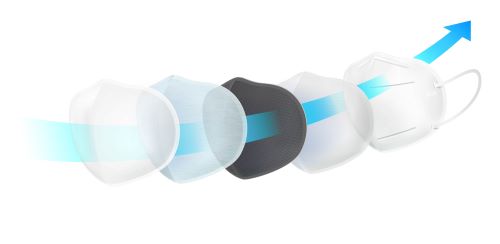How to test face mask leakage
Posted by KB on 9th Sep 2022

How to test face mask leakage
When using RPE (Respiratory Protective Equipment) it must be able to provide a satisfactory standard of protection for individuals. RPE is unable to protect the wearer if it ends up with leakage. One of the main causes of leaks is a poor facial fit.
Tight fitting face pieces need to be snug to a wearer's face to ensure the effectiveness of the mask.
It is unlikely that a particular size of mask will fit all as we come in different shapes and sizes. This is why fit testing is the best way to find suitable wear ability for the individual.
Fit Test
There are many little aspects to take into consideration when choosing a mask and whether it would be the best fit for you.
Masks are now coming in a variety of shapes and sizes, many designed differently. Some for work, some for style, some for class but most importantly, all for protection.
All masks are given a guideline to meet the requirements. They are made sure that a careful inspection is taken place. A strength test is given, meaning that is the mask able to withhold for a standard amount of time whilst in use. Filtering, able to filter and block out negative particles to be able to protect against anything. Breathing resistance, are you able to breath in the capacity of the mask.
When choosing the correct sizing of a face mask the best thing for you to do is to take into consideration the fit and whether this is most likely to protect you against any leakage that could potentially happen if fit is not thought about. The fit is tested by outward leakage. This can vary with things such as breathing, jaw structure, ear positioning, face shape.
For a male with facial hair, it needs to be thought about. It could be impossible to get a good seal for the face . This could allow leakage and cause contamination of edges.
Research
Did you know that there are trained specialists within fit testing?
There are labs around the world that are able to test the leakage of a face mask. Researchers tested that within the first wave of covid, many masks were providing leakage within different areas such as, nose, cheeks and chin. This was mainly due to poor fit on the face. Time has gone by and so has the testing procedure along with the adaptation of masks.
Throughout the waves of covid, researchers measured via simulation to study the particles, quality and protection of masks. This resulted in a calculation of high percentages of protection from various systems such as coughing, talking and sneezing.
Head over to the face mask store to find our fit testing kits to help you.



